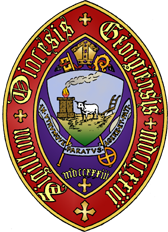For 30 years, the Diocese of Georgia enjoyed summer camp sessions on St. Simons Island. These began as a modest offering when the Rev. W.A. Jonnard, an associate at St. John’s in Savannah, took 14 young people for a two-week stay on the island in 1924. That summer and in the years until the Diocese built a camp, the group lived in rooms at a beach motel.
In 1932, the Diocese purchased ten lots of land a few hundred yards from the Atlantic Ocean using a gift of $7,500 from Mr. and Mrs. Charles Chapin of Thomasville and $2,300 in diocesan funds (a total of $218,000 in 2020 dollars). The Diocese built Chapin Hall at the Camp Reese named for Bishop Frederick F. Reese, who was the Bishop of Georgia at the time of the purchase.
 Eleven additional lots were added and buildings given in subsequent years. St. John’s Church in Savannah built Jonnard Cottage in 1933. The next year, Christ Church in Savannah built Wright Cottage in honor of their Rector, the Rev. David Cady Wright. St. Paul’s and Good Shepherd in Augusta added the Augusta Cottage in 1936. Funded from various gifts in 1938, Aiken Cottage was named in honor of Frank Aiken of Brunswick. Also in 1938, the Young People’s Service Group built Alexander Cottage in honor of Deaconess Anna Alexander who worked at the camp in the summer to raise money to support the school in Pennick. Alexander Cottage was described as a servants’ house for the camp.
Eleven additional lots were added and buildings given in subsequent years. St. John’s Church in Savannah built Jonnard Cottage in 1933. The next year, Christ Church in Savannah built Wright Cottage in honor of their Rector, the Rev. David Cady Wright. St. Paul’s and Good Shepherd in Augusta added the Augusta Cottage in 1936. Funded from various gifts in 1938, Aiken Cottage was named in honor of Frank Aiken of Brunswick. Also in 1938, the Young People’s Service Group built Alexander Cottage in honor of Deaconess Anna Alexander who worked at the camp in the summer to raise money to support the school in Pennick. Alexander Cottage was described as a servants’ house for the camp.
In a Living Church article in 1945, the Rev. James Lawrence reported, “From the scant beginning when Mr. Jonnard and his handful of campers rented a beach hotel the camp has grown and so contributed to Church life that it has been described as ‘the powerhouse of the diocese.’” That same year, the Diocese reported a camp enrollment of “457 persons comprising different youths and adults who attended that summer.”
Rita Griffeth, a Glynn County native who lived in Savannah, served as the diocesan secretary of religious education at this time. Each year from 1925 to 1950, she drove the backroads of central and south Georgia to personally find counselors and campers and then tirelessly run the program.
 During the post World War II years, the Diocese added two new buildings, a chapel and a recreational hall, the latter a memorial to Lt. Carl Schuessler, a U. S. Marine who lost his life in the Pacific after serving seven years on the staff of the camp. A tabby outdoor altar under the branches of a majestic live oak served as a beloved outdoor chapel, named Barnwell Chapel, for Bishop Reese’s successor, the Rt. Rev. Middleton Stuart Barnwell.
During the post World War II years, the Diocese added two new buildings, a chapel and a recreational hall, the latter a memorial to Lt. Carl Schuessler, a U. S. Marine who lost his life in the Pacific after serving seven years on the staff of the camp. A tabby outdoor altar under the branches of a majestic live oak served as a beloved outdoor chapel, named Barnwell Chapel, for Bishop Reese’s successor, the Rt. Rev. Middleton Stuart Barnwell.
The Diocese added an annual Layman’s Conference in 1949 as noted in a report to convention that “Much of this lay interest in the Church had been engendered over the years at special conferences and retreats at the Diocesan assembly, Camp Reese.”
By 1954, the buildings were becoming out-moded and the original privacy of the Camp was being lost as a result of continued residential construction adjoining the Camp. The Convention voted to sell the property. In the years between Camp Reese and Honey Creek, the diocese held youth conferences at Kolomoki State Park in Blakely and at Abraham Baldwin College in Tifton.
Pictured: The beach near Camp Reese (top); the outdoor altar at Camp Reese, painted by Tisha Chambers (bottom).
